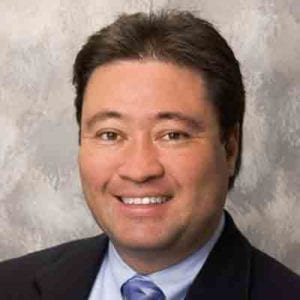
This is always an enthusiastic time of the year coming into Hannover Fair. While there is all the excitement and usual activities associated with any major tradeshow, the FDT Group will also hold its annual General Assembly meeting at Hannover Fair as it has done for the last 8 years. The FDT Group is entirely a member-led organization. Our members make up the technical working groups, the marketing departments, the Executive Committee and the Board of Directors. When we come together as a committee of the whole at our General Assembly, it is our time to renew friendships, to say thanks for the support and progress of the last year, and to confirm the future direction and leadership of the FDT Group.
One of the topics that is pivotal to the future technology direction of the FDT Group standards is the release of FDT version 2.1. This latest version of the standard makes several editorial clarifications, strengthens a few features, and sets the basis for the FDT IIoT Server™ (FITS™) standard that will be released later this year. My thanks to our Architectural and Specification Working Group for their dedication to ensure the timely release of these updates. True to the FDT legacy of compatibility, an FDT 2.1 FRAME™ can support a mixed topology of 2.1, 2.0 and 1.2.x DTMs. Interestingly, a DTM created under the 2.1 standard can also work with any existing FDT 2.0 FRAME. That is some great engineering supporting the huge installed base of FDT.
With the FDT 2.1 release in the rear-view mirror, we now are focused on our year-end delivery of the new FITS specification that allows DTMs to be securely accessed by any standard web browser on any standard platform – mobile, tablet, notebook, or desktop. Combined with our OPC UA server features, the FDT Server is positioned as a valuable hub of information accessible across the enterprise in full support of Industry 4.0 and our vision to empower the intelligent enterprise.
A great deal of the FITS specification has been authored and is now under review by the Architecture and Specification Working Group. The final standard will be delivered as three documents: the FDT 2.5 specification which builds on FDT 2.1 to include the HTML5 and JavaScript graphical user interface features; the FITS Web Services Technical specification which describes the Web Services interfaces and requirements for a FDT Server; and the OPC UA annex which describes the OPC UA server mapping for a FDT Server.
To fully support and accelerate the adoption of the new FITS architecture into the marketplace, a comprehensive development solution comprised of Common Components will be delivered together with the release of the FITS specification. Common Components create a library of FDT routines and will simplify compliant development of FITS-based solutions such as Servers, DTMs and Apps.
One question I am frequently asked about is backwards compatibility of FITS. A desktop FRAME application that has been upgraded to FDT version 2.5 will be able to host FITS based DTMs and previous generation DTMs in a mixed topology. This single user, desktop application will continue to be known as an FDT/FRAME™. The new component to the FDT architecture is the FDT Server. This can be deployed as a local server, in the Fog, or in the Cloud. Authorized users can access FDT 2.5 device DTMs hosted on this server via any standard web browser as well as interrogate and interact with plant level devices via the OPC UA server features. Because of the security, scalability and the ease of deployment of a FDT Server, the solution is set to simplify entry into the IIoT marketplace as the only standardized integration architecture providing a single interface with mobile access cloud-to-plant-floor.
While I am pleased with the progress to date, we still have a lot to accomplish in the balance of the year. We have over a hundred-people working on the various aspects of FITS to get it ready for a release later this year, I would like to take this opportunity on behalf of the Board of Directors to thank all these volunteers from our member companies for their expertise, passion, and dedication to the FITS project.
Lastly, as an international non-profit standards-based organization, I would like to extend a welcome and recognize Wetcon GmbH from Senden, Germany as FDT’s newest Corporate member. As always, we welcome other companies interested in this exciting journey, to join as a member of the FDT Group supporting the evolution of FDT technology.
Lee Lane
Chairman of the FDT Group Board of Directors